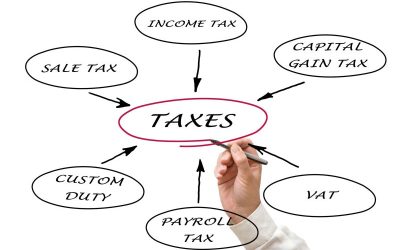As the demand for sustainable practices grows, businesses are increasingly seeking ways to lower operational costs while minimizing environmental impact. One of the most effective strategies is leveraging Federal Tax Credits For Energy Efficiency Commercial Buildings . These incentives not only reward organizations for making energy-efficient upgrades but also provide substantial savings on tax liabilities. Understanding how these credits work and how to maximize your benefits can make a meaningful difference to your bottom line.
Understanding Federal Tax Credits for Energy Efficiency
Federal tax credits are designed to encourage commercial building owners to invest in energy-efficient improvements. These incentives typically apply to new constructions, major renovations, and retrofit projects that reduce energy consumption. The most prominent credit available is the Section 179D deduction, which provides financial benefits for qualifying energy-efficient systems.
What Qualifies for the Tax Credit?
To take advantage of these credits, commercial building owners should focus on upgrades that target the building’s major energy-using systems. Qualifying improvements may include:
- Lighting systems: Installing energy-efficient lighting, such as LEDs or automated lighting controls.
- HVAC systems: Upgrading to high-efficiency heating, ventilation, and air conditioning units.
- Building envelope improvements: Enhancing insulation, windows, and roofing to reduce energy loss.
Eligibility is typically determined by a reduction in total annual energy and power costs compared to a reference building. A licensed professional must certify that the improvements meet the required efficiency standards.
How to Maximize Your Savings
Maximizing your savings through federal tax credits involves a strategic approach:
- Conduct an Energy Audit
Start by assessing your building’s current energy usage. An energy audit identifies inefficiencies and pinpoints areas where upgrades will have the greatest impact. This step is crucial to ensure that investments are targeted and effective. - Plan and Prioritize Upgrades
Not all improvements offer the same return on investment. Prioritize projects that:
- Offer the highest energy savings.
- Qualify for the maximum available tax credits.
- Align with your long-term sustainability goals.
- Work with Qualified Professionals
Proper certification is required to claim federal tax credits. Collaborate with engineers or architects experienced in energy efficiency projects for commercial buildings. Their expertise ensures that all improvements meet federal standards and that the necessary documentation is completed. - Stay Up-to-Date with Legislation
Tax laws and energy credit programs can change. Regularly review federal guidelines and consult with tax professionals to stay informed about new opportunities or adjustments to existing credits.
The Application Process
To claim the federal tax credits, follow these steps:
- Gather documentation for all qualifying improvements.
- Obtain certification from a licensed professional.
- File the appropriate tax forms with your annual return.
For a comprehensive overview and step-by-step guidance, visit this Federal Tax Credits For Energy Efficiency Commercial Buildings resource.
Federal Tax Credits For Energy Efficiency Commercial Buildings offer a powerful way to reduce operating costs while supporting environmental goals. By understanding eligibility, conducting targeted upgrades, and working with qualified professionals, commercial property owners can unlock significant tax savings. Stay proactive, keep abreast of legislative changes, and make energy efficiency a cornerstone of your business strategy to maximize these valuable incentives.


